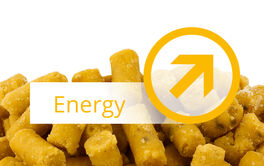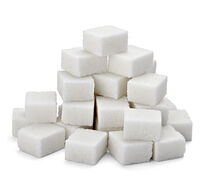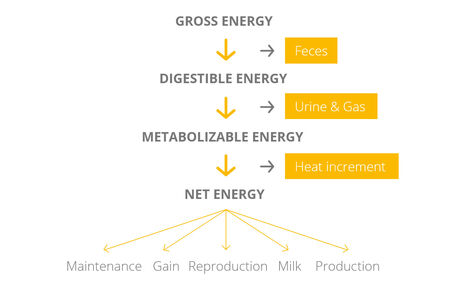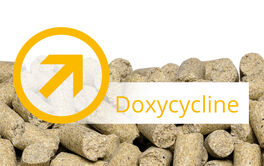Complete Care
Competence

Diet Energy
To move, grow and reproduce, animals consume energy. Their needs are very different and energy consumption also varies. To anticipate or respond to these needs, some animals store energy, while others prefer to increase the amount of food they consume or digest food more efficiently.

But how can grass, meat, or milk provide energy?

In 1770, Antoine Lavoisier proved that oxidation of food is the body's heat source. The first studies to measure body heat were conducted in the twentieth century by Carl von Voit and Max Rubner, who measured the energy consumption of animals by applying the principles of nutritional physics.

Today, with the advances in the science of metabolism, we are able to explain the fundamental differences between the diets of carnivores and herbivores. Herbivores with the help of bacteria utilize energy crops and synthesize the missing nutrients in the plants. On the other side carnivores consume meat and fat to reach their energy needs and obtain the nutrients they cannot synthesize themselves.


| Digestible energy calculations | |
|---|---|
| Rabbit, Guinea Pig, Chinchilla | DERabbit [MJ/kg] = (17.79 – (0.0136 * g CF) – (0.0480 * g CA)) * g DM/880 |
| Dog, Cat | GE (kcal) = (5.7 * g CP) + (9.4 * g fat) + [4.1 * (g NfE + g CF)] |

| Metabolizable energy calculations | |
|---|---|
| Rat, Mouse, Hamster, Pig, Mini Pig |
MEPig [MJ/kg] = 0.0223 * g CP + 0.0341 * g CL + 0.0170 * g St + 0.0168 * g Su + 0.0074 * g |
| Rabbit, Guinea Pig, Chinchilla | MECattle [MJ/kg] = 0.00126 * g CP + 0.0225 * g CF + 0.0112 * g NfE + 0.0003975 * g CA * g CL – 0.0001993 * g CA * g CF + 0.000002499 * g ELOS² – 0.15 |
| Poultry : Broiler, Chick, Turkey quail, Hen, Duck, Goose | MEPoultry [MJ/kg] = 0.01551 * g CP + 0.03431 * g CL + 0.01669 * g St + 0.01301 * g Su |
| Dog, Cat (Atwater modified) | MEDog/Cat [MJ/kg] = 0.01465 • g CP + 0.03558 • g CL + 0.01465 • g NfE |
| Primates (Atwater) | MEPrimate [MJ/kg] = 0.01674 • g CP + 0.03767 • g CL + 0.01674 • g NfE |
DE (per g food) = (GE of food consumed – GE of faeces collected) / amount of food consumed
ME = [(GE of food consumed – GE of faeces collected) – (grams protein consumed – grams protein in faeces) x correction factor for energy loss in urine] / amount of food consumed
It is possible to use the modified Atwater formula for the poor fiber standard diets, this formula is based on an average digestibility of 90% for CL, 85% for NfE and 80% for CP
Modified Atwater factors (ME (MJ/kg) = 0.01465 * CP (g) + 0.03558 * CL (g) + 0.01465 * NfE (g))
Other Special Custom Diet Solutions
TAMOXIFENE DIET

SAFE® customizes diets with tamoxifen to activate CreER. The site-specific Cre/lox recombination system has been proven to generate conditional somatic GMOs in mice. This method allows to spatially and temporally control gene activity in almost any mouse tissue.
DOXYCYCLINE DIET

SAFE® produces customized diets with doxycycline hyclate for Tet-regulated systems. Doxycycline hyclate is used in tetracycline (doxycycline)-inducible gene expression as a stable switch to control transcriptional activation, also known as the Tet-On/Tet-Off system with doxycycline-sensitive GMO mice.



